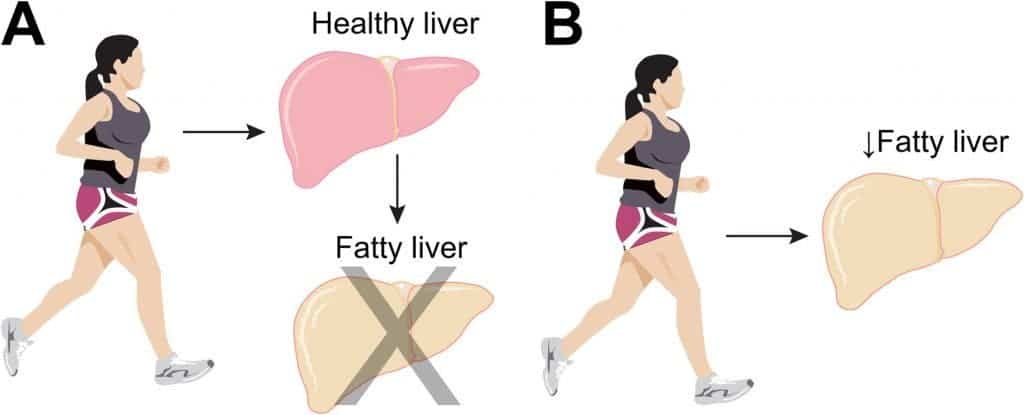
By now, you must have heard it all when it comes to the benefits of exercising. From controlling weight and preventing diseases to boosting your mood and improving your sex life, regular physical activity is one of the single most important things to keep your body healthy — along with a healthy diet. But even so, here’s another reason to stay in shape: exercising has positive effects on the liver, according to researchers at the University of Tsukuba.
Non-alcoholic fatty liver disease (NAFLD), a condition where excess fat builds up in the liver, is the most common liver disorder worldwide, affecting as much as a quarter of the world’s population. The disease is typically associated with unhealthy lifestyle choices such as overeating and sedentarism.
The primary objective of managing NAFLD is controlling weight to a healthy level. When it comes to weight loss, your two best friends are exercise and diet. However, exercising is considered more difficult to main over time consistently, especially without a personal trainer to help, so the focus is generally on cutting fat through calorie restriction.
But according to Japanese researchers, both exercise and diet are important. Forgoing exercise would be a mistake since it provides important benefits such as reducing hepatic steatosis.
In their new study, the researchers compared data from obese Japanese men with NAFLD on a 3-month exercise regimen with those on a dietary restriction meant for weight loss. Researchers tracked hepatic parameters, reduction in adipose tissue, increase in muscle strength, reductions in inflammation and oxidative stress, and expression of target genes of Nrf2, an oxidative stress sensor.
Compared to dieting, the exercise program reduced liver steatosis by an additional 9.5%, liver stiffness by an additional 6.8%, and the FibroScan-AST Score (a measure of liver fibrosis) by an additional 16.4%, ultrasound elastography revealed.
What’s more, the exercise regimen also enhanced the circulating concentration of organokines, which are pleiotropic molecules that regulate inflammation, oxidative stress, glucose and lipid metabolism, and fat distribution. This led to improved anti-inflammatory and anti-oxidative stress responses.
“Our research shows how exercise prevents liver steatosis and fibrosis in NAFLD and clarifies that this benefit is compounded by the preservation of muscle mass and is independent of weight changes. Patients on exercise regimens may become demotivated and drop out if they do not experience significant weight loss. Therefore, moderate to vigorous-intensity exercise should be integrated into all NAFLD therapeutic regimens, and patients at risk for NASH should be encouraged to persevere with moderate to high-intensity exercise regardless of whether or not they lose weight,” senior author Professor Junichi Shoda explained.
Previously, a 2016 study published in the Journal of Hepatology found moderate to vigorous exercise is beneficial in decreasing risk of development of new fatty liver or improving resolution of existing fatty liver.
Besides keep your liver in tip-top shape, exercise improves mood, boosts energy, and promotes better sleep, among many other benefits. For most healthy adults, the U.S. Department of Health and Human Services recommends at least 150 minutes a week of moderate aerobic activity or 75 minutes a week of vigorous aerobic activity, or a combination of moderate and vigorous activity.
The findings appeared in the journal JHEP Reports.









